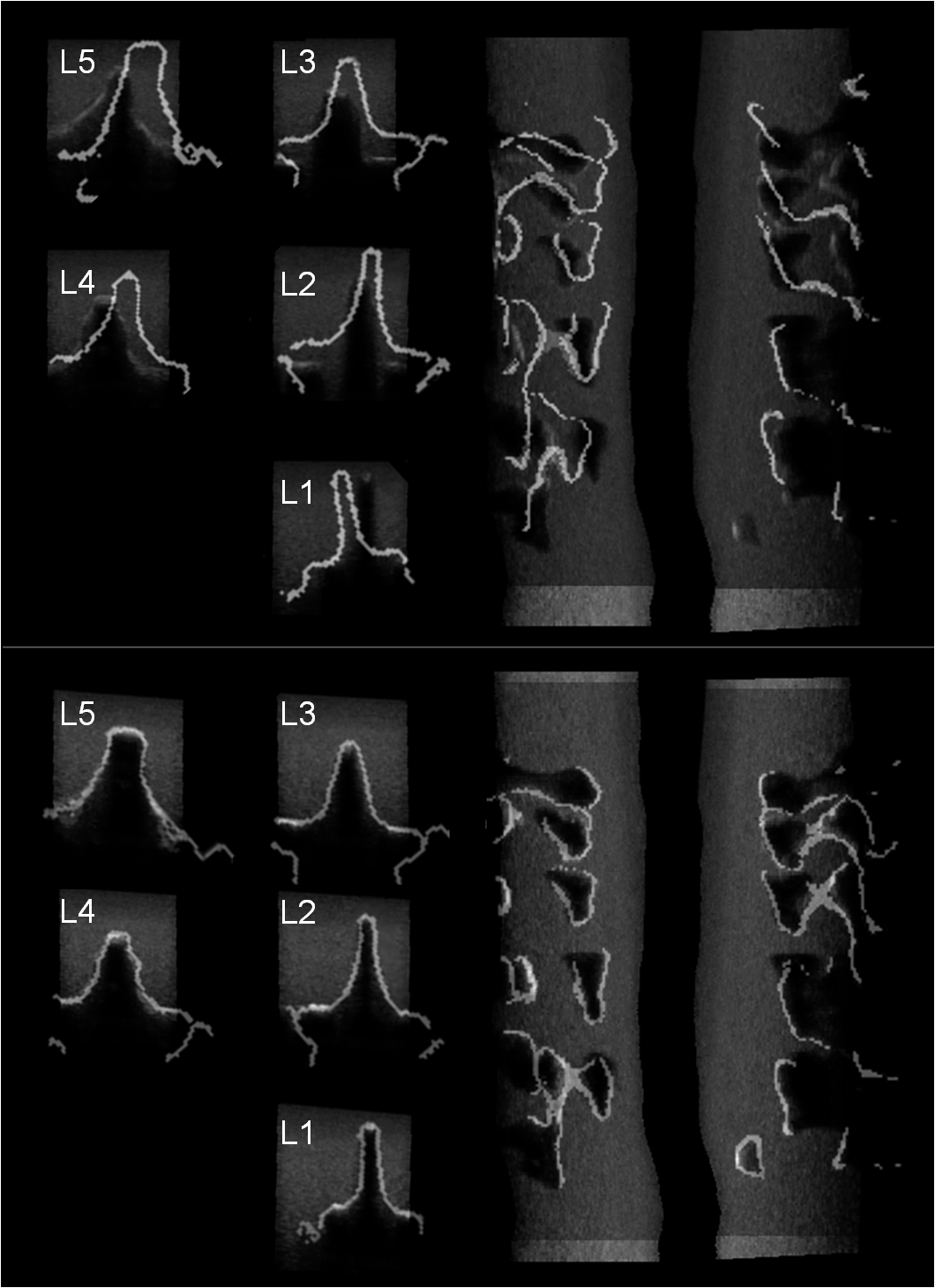Group-wise CT to Ultrasound Registration of Lumbar Spine
Student: Abtin Rasoulian
Advisor: Purang Abolmaesumi, Nassir Navab
Supervision by: Christian Wachinger
| Percutaneous spinal needle injection is a common procedure for pain management. This procedure is normally guided by fluoroscopic imaging to direct the needle to the targeted injection site, such as a facet joint. To minimize both patient and surgeon exposure to ionizing X-ray radiation and to improve the accuracy of needle targeting, the use of intra-operative ultrasound imaging has been proposed.1, 2 However, interpreting intra-operative ultrasound images is challenging due to overlapping bone segments and the effects of shadowing, especially in the lumbar spine area. It would therefore be desirable to augment the information in ultrasound images with the one from another pre-operative imaging modality such as CT or MRI, for enhanced intra-operative guidance. Most approaches address a single-body rigid registration problem and do not consider multi-body registration scenarios, where deformations in the anatomy exist between pre-operative and intra-operative data such as the case with spine. In this work we present a group-wise approach for registration of pre-operative CT and intra-operative freehand 2-D ultrasound images of the lumbar spine. To compensate for the changes in the spine curvature between pre-operative CT and intra-operative ultrasound data, the UKF-based registration method is extended to rigidly and simultaneously register each vertebra using a group-wise registration approach. A biomechanical model is used to constrain the vertebrae motion during the registration process. The proposed approach is less computationally-intensive and therefore, more suitable for real-time applications. |

An example of registration: On top the initial alignment of ultrasound and CT points are depicted. The final alignment after registration is shown in the bottom.
| ProjectForm | |
|---|---|
| Title: | Group-wise CT to Ultrasound Registration of Lumbar Spine |
| Abstract: | Registration of pre-operative CT and freehand intra-operative ultrasound of lumbar spine aids surgeons in the spinal needle injection which is a common procedure for pain management. Patients are always in a supine position during the CT scan, and in the prone or sitting position during the intervention. This leads to a difference in the spinal curvature between the two imaging modalities, which means a single rigid registration cannot be used for all of the lumbar vertebrae. In this work, a method for group-wise registration of pre-operative CT and intra-operative freehand ultrasound images of the lumbar spine is presented. The approach utilizes a point-based registration technique based on the *unscented Kalman filter*, taking as input segmented vertebrae surfaces in both CT and ultrasound data. Ultrasound images are automatically segmented using a dynamic programming approach, while the CT images are semi-automatically segmented using thresholding. The registration approach is designed to simultaneously align individual groups of points segmented from each vertebra in the two imaging modalities. A biomechanical model is used to constrain the vertebrae transformation parameters during the registration and to ensure convergence. |
| Student: | Abtin Rasoulian |
| Director: | Purang Abolmaesumi, Nassir Navab |
| Supervisor: | Christian Wachinger |
| Type: | DA/MA/BA |
| Area: | Registration / Visualization, Medical Imaging |
| Status: | finished |
| Start: | |
| Finish: | |